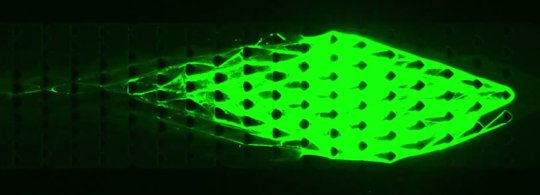[ad_1]
Tapping into the unique nature of DNA, Cornell engineers have created simple machines constructed of biomaterials with properties of living things.
Using what they call DASH (DNA-based Assembly and Synthesis of Hierarchical) materials, engineers constructed a DNA material with capabilities of metabolism, in addition to self-assembly and organization — three key traits of life.
“We are introducing a brand-new, lifelike material concept powered by its very own artificial metabolism. We are not making something that’s alive, but we are creating materials that are much more lifelike than have ever been seen before,” said Dan Luo, professor of biological and environmental engineering.
The paper published in Science Robotics.
For any living organism to maintain itself, there must be a system to manage change. New cells must be generated; old cells and waste must be swept away. Biosynthesis and biodegradation are key elements of self-sustainability and require metabolism to maintain its form and functions.
Through this system, DNA molecules are synthesized and assembled into patterns in a hierarchical way, resulting in something that can perpetuate a dynamic, autonomous process of growth and decay.
Using DASH, the Cornell engineers created a biomaterial that can autonomously emerge from its nanoscale building blocks and arrange itself — first into polymers and eventually mesoscale shapes. Starting from a 55-nucleotide base seed sequence, the DNA molecules were multiplied hundreds of thousands times, creating chains of repeating DNA a few millimeters in size. The reaction solution was then injected in a microfluidic device that provided a liquid flow of energy and the necessary building blocks for biosynthesis.
As the flow washed over the material, the DNA synthesized its own new strands, with the front end of the material growing and the tail end degrading in optimized balance. In this way, it made its own locomotion, creeping forward, against the flow, in a way similar to how slime molds move.
The locomotive ability allowed the researchers to pit sets of the material against one another in competitive races. Due to randomness in the environment, one body would eventually gain an advantage over the other, allowing one to cross a finish line first.
“The designs are still primitive, but they showed a new route to create dynamic machines from biomolecules. We are at a first step of building lifelike robots by artificial metabolism,” said Shogo Hamada, lecturer and research associate in the Luo lab, and lead and co-corresponding author of the paper. “Even from a simple design, we were able to create sophisticated behaviors like racing. Artificial metabolism could open a new frontier in robotics.”
Story Source:
Materials provided by Cornell University. Original written by Matt Hayes. Note: Content may be edited for style and length.
[ad_2]















